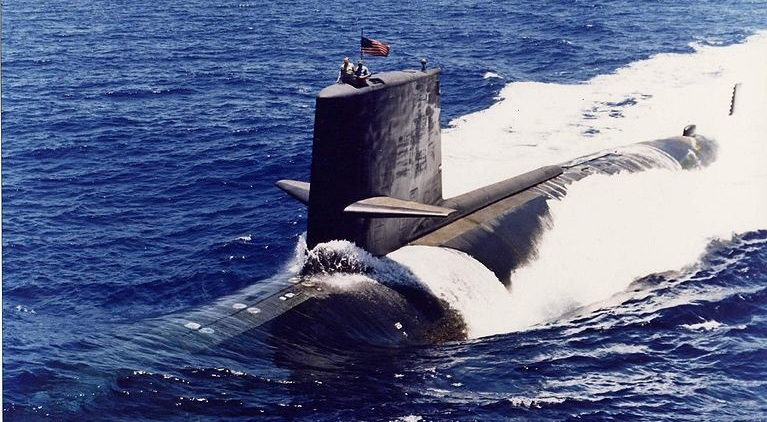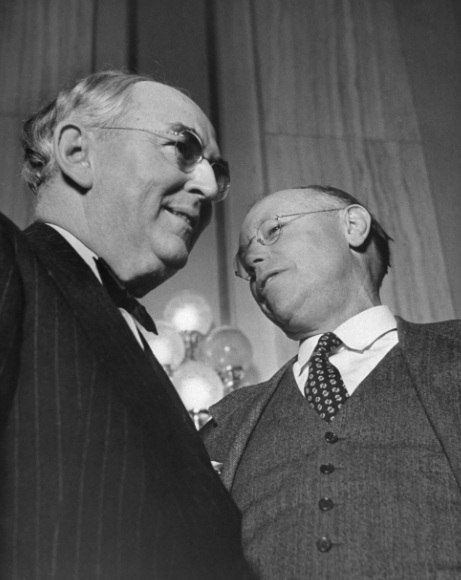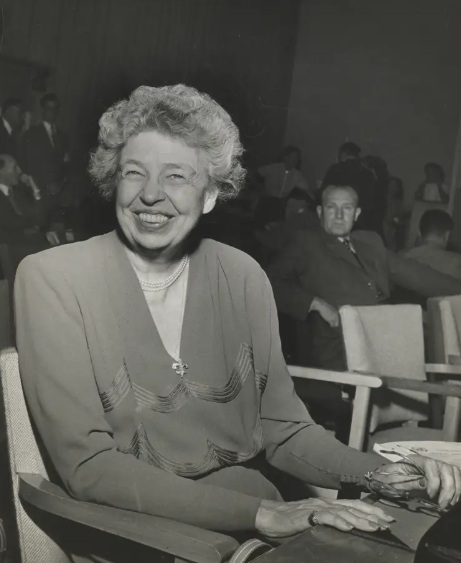Goodbye to the Bambino – October 1951 – January 1952


October was greeted with the passing of a bona fide American icon as baseball legend Babe Ruth passed away following a short battle with cancer. It is hard to underestimate Babe Ruth’s cultural impact in the first half of the twentieth century, a time when the national pastime of baseball dominated the sporting landscape and a superstar of Ruth’s calibre – winner of seven world series between 1915 and 1931 with the Boston Red Sox and New York Yankees. Retiring from the sport just two years before the nation’s descent into Civil War, he was a living representation of both the more innocent pre-Civil War era; and of the modern industrial society.
Even at a time of war, the news of his passing was deeply felt across the nation – with more than 100,000 attending a memorial at Yankee stadium, while many tens of thousands lined the streets to greet his funeral procession and the President sent his personal condolences. Such an outpouring of grief for a sporting figure had never been seen before.

While the Andalusian front was beginning to settle during the first week of October, American armour made a crucial breakthrough just north of Faro and raced through the breach at breakneck base across the land lands of southern Portugal. By 9 October, the American spearheads had reached the coast at Comporta – cutting off more than 90,000 syndicalist troops to the south – while they were continuing to push northwards, with little more than battered Iberian units standing between them and the great prize of Lisbon itself, a city American forces had failed to take during the ill-fated Portuguese campaign of 1949.
Maintaining momentum, through the next week, Clark’s troops secured the surrender of the syndicalists caught in the Beja pocket, a major victory, and pushed into Setubal – leaving them separated from Lisbon only by the wide mouth of the Tagus river. However, this represented the peak of a campaign that was running out of steam. Unable to push on, Clark’s troops paused while the syndicalists rushed in reinforcements and launched a counterattack of their own between 17 and 23 October that pushed the Americans all the way back to the Algarve coast, where they were able to dig in.

After the unsatisfying conclusion of the Beja campaign, General Clark remained determined to make inroads deeper in Iberia while Entente forces still had an edge in numbers and troop quality. Nonetheless, the next course of action was far from obvious as the American General faced off against his counterpart, the French Marshal Koenig – who had been given overall responsibility for the leadership of all Internationale forces in Iberia. With the American troops on the Portuguese portion of the front in no fit state for offensive operations, and the syndicalists heavily reinforced in the flat Guadalquivir Valley surrounding Seville, counter-intuitively Clark looked towards the eastern portion of the front and the unforgiving terrain of the Sierra Nevada Mountains. With Koenig believing an Entente offensive through the mountains unlikely, he had left his lightest defences in the sector – despite the crucial logistical hubs of the old Moorish city of Grenada and the port of Almeria being in striking distances of the Entente lines.

The resulting Granada-Almeria offensive lasted just six weeks between the end of November and the start of January and saw the largest deployment of Canadian troops of the campaign to date. However, despite some early successes in overwhelming the weak troops Koenig had initially placed in the Entente’s way that allowed them to reach the environs of Grenada and Almeria by early December – the situation soon turned into a bloody quagmire. Losses were obscene, supply lines through the mountains uncertain and the syndicalists’ defence of the two core objectives stubborn. Indeed, although the cities were pounded into rubble by the heavy artillery and rocketry of Entente forces, leaving the stunning Medieval Alhambra Palace in Grenada almost totally destroyed, Entente prospects of success were fading fast by Christmas, with the offensive paused entirely early in the New Year. After this failure, Clark would inform Patton in Morocco that, with the syndicalists continuing to bring more and more troops to the theatre, he could see no more viable routes for offensive action.

Far away from the slaughter in Southern Iberia, the small nation of Iceland was falling into a state of turmoil and peril. Although the isolated and forgotten island had enjoyed a sudden up tick in prosperity through much of the 1940s under the auspices of the Third Internationale – with the scale of the Union of Britain’s military investment seeing wages and living standards soar – the 1950s had not been nearly so kind. Indeed, as the US Navy gained the clear upper hand, the British bases that had once been a source of valuable economic stimulus now made the island a key strategic target.
For their part, the American approach to Iceland was to avoid a head-on offensive put to instead blockade the island from receiving any supplies from Scotland to the south – with dozens of US submarines prowling the icy waters surrounding it. While this was damaging enough, in 1951 the Americans changed course from merely targetting supply shipments – with the aim of degraded the syndicalists ability to operate their Icelandic bases – to instead target civilian fishing vessels in a hugely controversial move within the naval leadership. On an island with such limited capacity for agriculture and few other sources of food, this was a matter of life and death. By the winter, famine conditions were taking hold.

In late November, after an entire family living in a poor Reykjavik neighbourhood was found starved in their home the city exploded into two days of vicious rioting. Fearing the breakdown of society, elements within the ruling syndicalist clique launched an internal coup – with neutralist elements slaughtering those parts of the elite that remained aligned to the Internationale. The tiny Icelandic military, alongside auxiliary police and militiamen then moved to surround the British at their main military base at Keflavik – placing them under siege. The new ruling group, eager to extricate Iceland from the war, then invited previously banned anti-syndicalist political parties to form a coalition government within them and reached out to the Entente for peace.
While some in the American military leadership were keen to push for occupation of the island, the opportunity to bloodless break the nation away from the syndicalists was enough to win the day – with the Entente agreeing to accept Icelandic neutrality in exchange for an indemnity and the surrender of all Internationale men and materials on the island over to them.

While fighting was underway in the Beja campaign in southern Portugal, US forces in North Africa made a second effort to conquer Algeria. Advancing out from Oran, the Americans sent the syndicalists into headlong retreat all the way back to Algiers, where they again made a last stand, just as they had done in the summer, and again ground the Americans to a standstill – inflicting heavy losses while also countering a failed attempt by a second prong of the American attack to outflank the city from the south. After the failure of the second battle of Algiers, the syndicalists did not follow up their victory with another counteroffensive against the tired American troops – and instead used the respite to reduce their commitment to the theatre, withdrawing soldiers back to the harsh battlefields of Iberia.

For a time, it appeared that North Africa would remain in stalemate for some time to come, locking up hundreds of thousands of American troops needed elsewhere. However, in the first week of December a crucial breakthrough was made in the passes of the Atlas Mountains, right on the southern border of syndicalist Algeria. Exploiting this narrow gap, fast moving US units raced through and found the syndicalist rear almost entirely open. Despite the efforts of the Internationale to wheel their troops on the frontline near Algiers around to counter the American incursion, by the end of the month the Americans had overwhelmed Tunisia – trapping three syndicalist divisions in the interior around Kairoun and initiating the collapse of the Tunisian syndicalist regime – while isolating the remaining part of the syndicalist army in North Africa between Algiers and the Tunisian border. In the space of a few weeks, the long running North African campaign had been upended and appeared to be approaching a rapid victorious end.

Despite the positive news in December from North Africa, by the end of 1951 the US military was facing a serious manpower crisis. The fighting across all fronts had grown more intense than anything seen through the first three years of the war. Iberia in particular was a spiralling hell scape of death, with the sky lit red even at night as rockets, aerial bombardment and artillery fire pounded ceaselessly. Between August 1951 and January 1952, American forces suffered 600,000 casualties – more than doubling the total endured throughout the entire first three years of fighting and a level comparable to the very bitterest phases of the Civil War. Coming at a time when the military was also continuing to expand rapidly in size, fielding whole new divisions on a monthly basis, the manpower shortage was growing acute, carrying significant military and political risks.
At the onset of the war, the nation had implemented a draft that primarily targetted men between the ages of 20 and 33 – with fairly significant exemptions dependent on occupation and personal circumstances, and exclude all non-whites. While this level of conscription had been sufficient to support the rapid expansion of the military through the first three years of war, and replenish losses in campaigns, the sudden upturn in casualties from the autumn of 1951 had seen this equilibrium lost. From late November, General Patton had informed the White House that by the end of the year he would no longer have sufficient numbers of recruits coming through to ensure that all frontline combat units could operate at full strength. The US war machine needed more men.
With little prospect of working through Congress at the necessary pace, President Thurmond would pass through an Executive Order in mid-December – extending the ages for the draft to 18-35, removing many existing exemptions and most notably, and for the first time during the war, expanding the draft to African Americans for the first time – who would operate in fully segregated auxiliary roles in order to free up manpower for the frontline.
With the opposition howling in protest, this extension of further recruitment came at a time when the American public’s willingness to fight on to the end was already being shaken by the terrible casualties being seen in Iberia and North Africa. Coming into a presidential election year, the warhawks knew they had at most months to provide a clear path to victory or else public opinion would force Washington’s into peace negotiations whether the military brass liked it or not.

Amid this wavering on the home front, the United States had caught up with the leading superpowers of the world in developing its own atomic capability. Japan had led the way, being the first to successfully test a nuclear weapon as early as 1949 with the Russians following the next year; while the African city of Lagos had witnessed the devastation of the syndicalists’ nuclear efforts – the only occasion to date when an atomic weapon had been used in warfare. For their part, the Internationale had struggled to rebuild their nuclear programme after the loss key infrastructure and knowledge in Lagos; not to mention easy access to key raw materials in West Africa that were far harder to procure in continental Western Europe. Meanwhile, the United States had caught up – successfully testing a weapon deep in the New Mexico desert in the summer of 1951, and shipping out an useable bomb to Morocco by the end of the year.
Now in possession of a super weapon capable of tipping the balance of power in the conflict, questions in the American leadership now turned to weighty questions both moral and practical. The horrifying impact of nuclear weapons had been made clear by the destruction of Lagos – could the United States in good conscious claim moral superiority over the syndicalists if they followed suit? How could the bomb be successfully deployed in the absence of total aerial superiority over the reds? If it was to be used and could be effectively, where would it provide the greatest strategic advantage?
- 4





















































